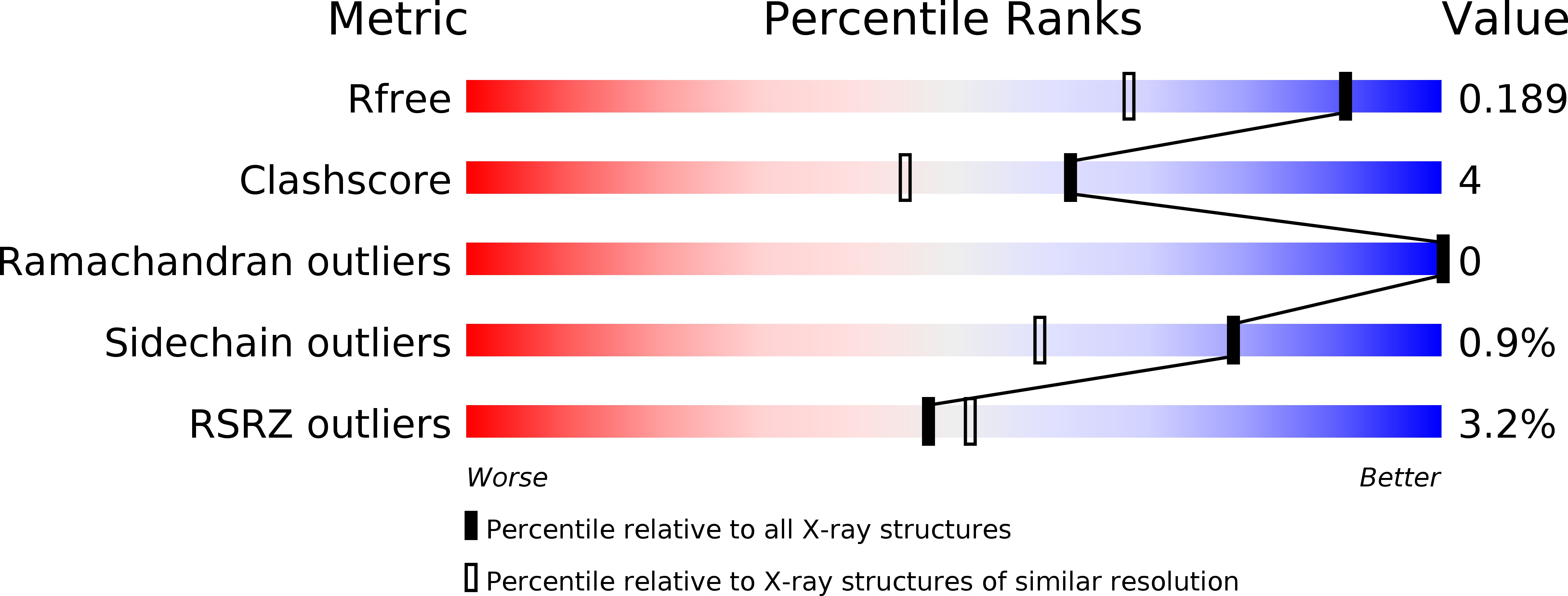
Deposition Date
2018-02-05
Release Date
2018-04-11
Last Version Date
2025-09-17
Entry Detail
PDB ID:
5Z9Y
Keywords:
Title:
Crystal structure of Mycobacterium tuberculosis thiazole synthase (ThiG) complexed with DXP
Biological Source:
Source Organism:
Mycobacterium tuberculosis H37Rv (Taxon ID: 83332)
Host Organism:
Method Details:
Experimental Method:
Resolution:
1.48 Å
R-Value Free:
0.18
R-Value Work:
0.16
R-Value Observed:
0.16
Space Group:
P 61 2 2


